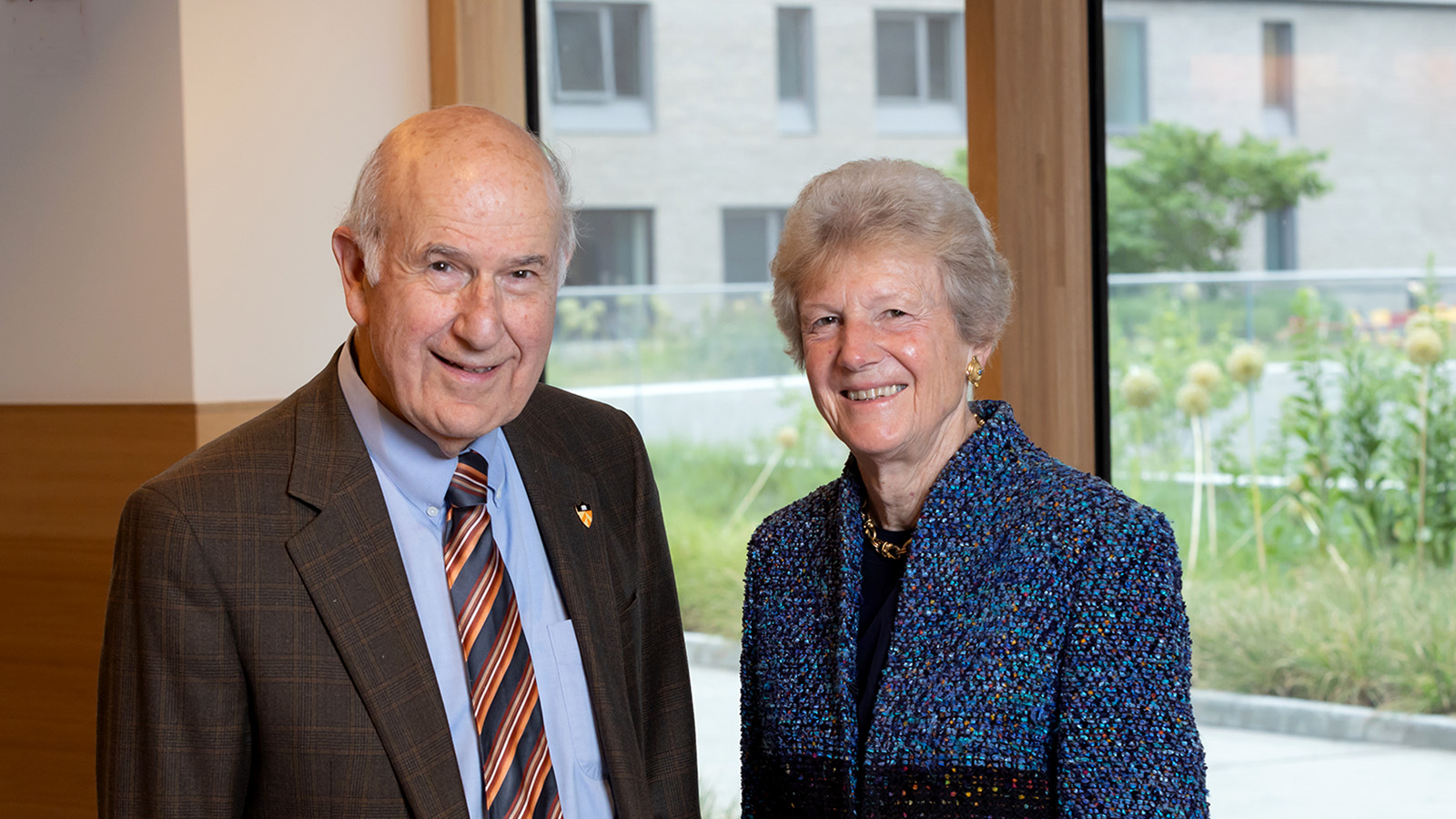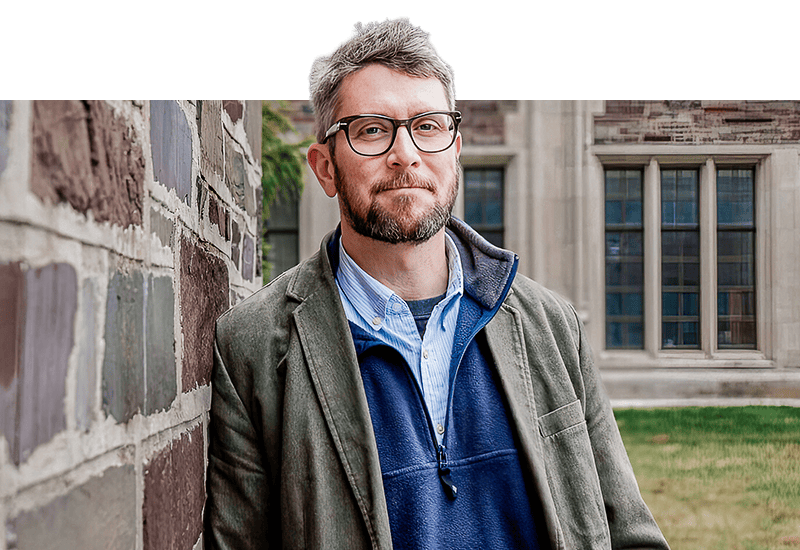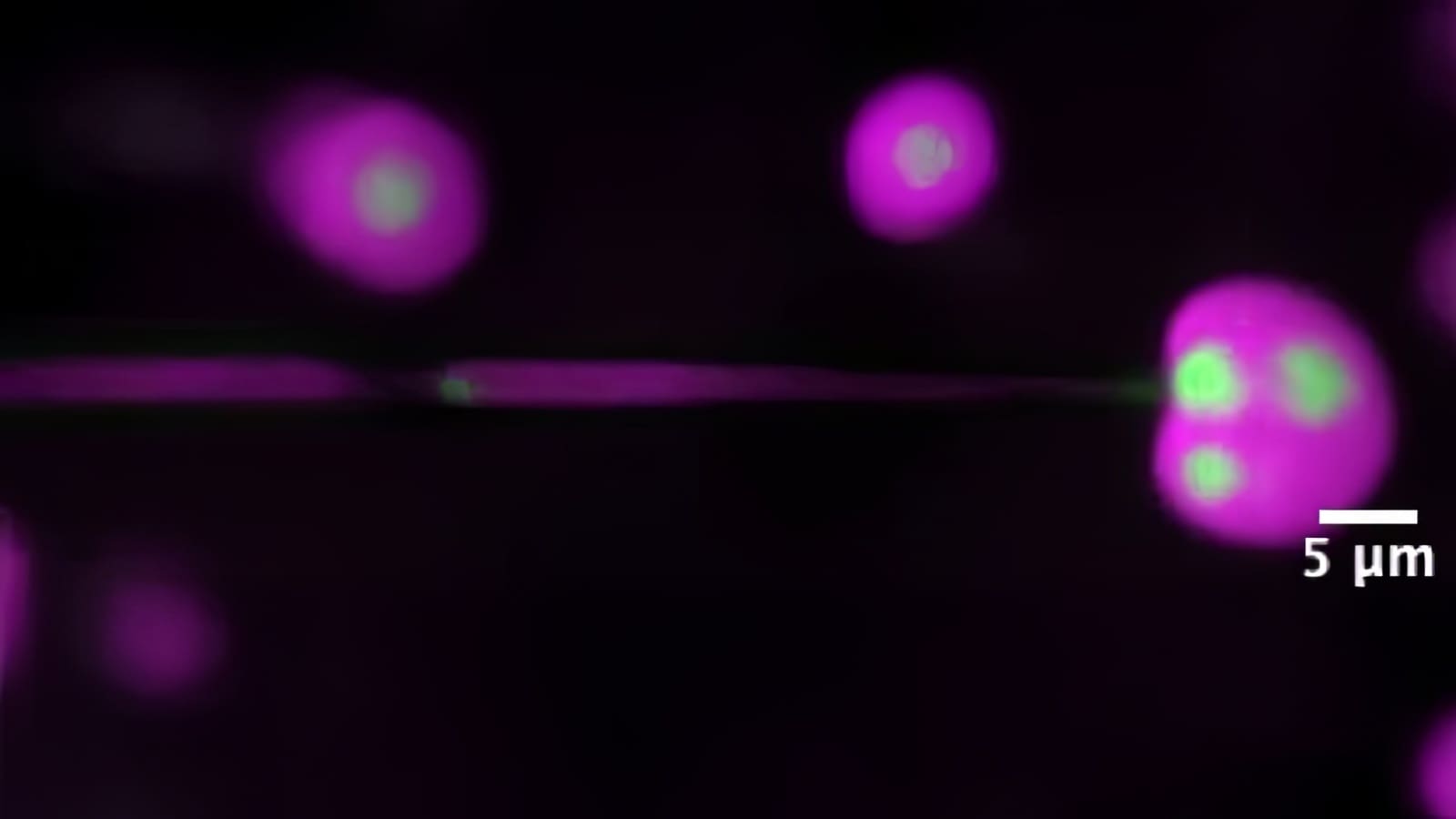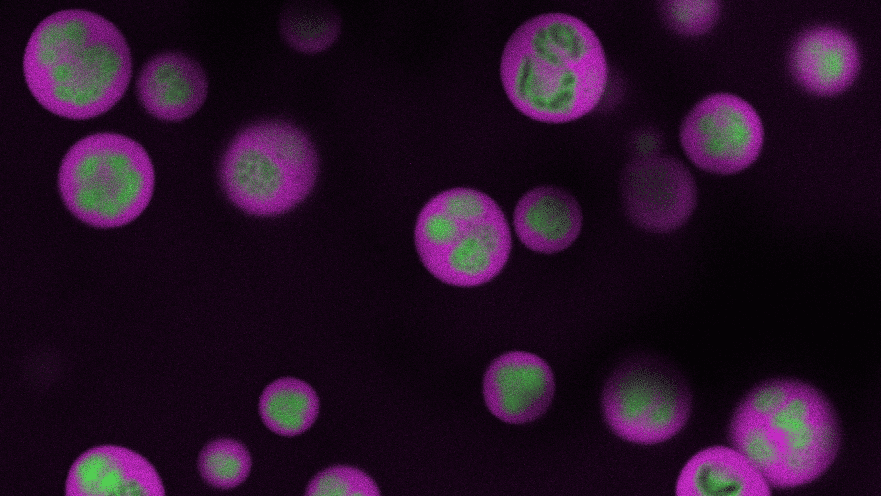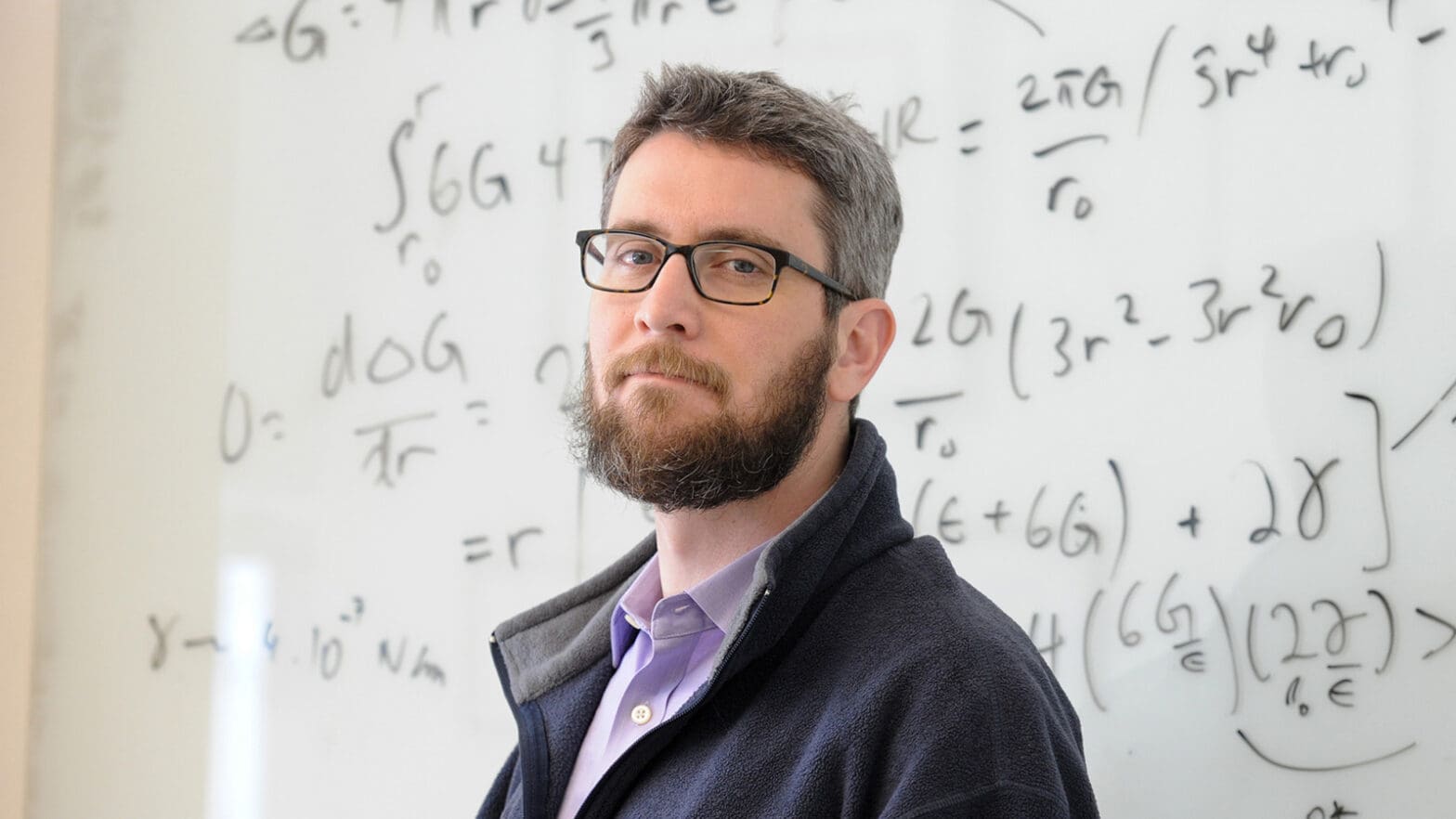
Princeton’s Clifford Brangwynne, explorer of liquid order in cells, named a Howard Hughes Medical Institute Investigator
By
on
But over the last decade, thanks to a new field pioneered by Princeton’s Clifford Brangwynne, scientists have fathomed that there is a hidden order in the liquid of cells. Key cellular components form droplets, like oil in water, as a way of fluidly walling off sensitive molecules to perform vital tasks. Via these liquids-within-liquids, cells can organize the thousands of biomolecules jam-packing their chaotic inner spaces. And should those liquids pathologically jellify or solidify, disease sets in as the cell loses its quintessential flow.
To support Brangwynne in his paradigm-shifting exploration of the liquid cellular landscape, the Howard Hughes Medical Institute (HHMI) has named him one of its 19 new Investigators. The distinction is one of the most sought-after awards in biomedical research.
“I’m incredibly honored,” said Brangwynne, an associate professor of chemical and biological engineering and principal investigator of the Soft Living Matter Group at Princeton, of his selection by the HHMI. “It’s a wonderful vote of confidence in me and my research, which emboldens me to push into totally new territory.”
Headquartered in Chevy Chase, Maryland, HHMI is a non-profit medical research organization founded in 1953. Its Investigator Program provides seven years of funding for researchers, who remain based at their home institutions, pursuing cutting-edge science. This innovative approach affords researchers time to concentrate on their work and not have to continually seek short-term grants.
“In science, we have these ‘gut feelings’ or intuitive senses for the most interesting and fruitful areas to dig into,” said Brangwynne. “Being an HHMI Investigator means that my scientific instincts are much less resource-limited-I can take more risks and follow my nose.”
The emerging cellular organizing principle is formally called liquid-liquid phase separation. Phase transitions are a well-known phenomenon with many examples in industry and everyday life. Most people are familiar with phase transitions that occur between different states: when water droplets condense on a cold window, the molecule has undergone a so-called phase transition into a liquid from a gaseous state. But phase transitions also can happen from one form of liquid to another. Liquids in different phases, with varying properties such as viscosity and surface tension, can flow amongst each other without mixing.
In cells, this sort of partitioning of biomolecules into blobs like those in a lava lamp creates numerous structures, known as organelles. Their name derives from how “they are to our cells what our organs are to our bodies,” Brangwynne explained, serving in particular, interdependent roles to carry out a cell’s overall function. A prominent example is the nucleolus, the largest structure in a cell’s nucleus. The nucleolus droplet, which has a honey-like consistency, handles diverse tasks such as protein factory construction, cellular growth coordination, and stress management. Ongoing research in Brangwynne’s lab is explicating what goes wrong when the nucleolus firms up permanently and loses its function, as well as how to reverse or prevent this undesirable transition.
“Just like how water becomes solid when you put it in the freezer, the liquid organelles that we study can also ‘freeze’ and cause problems for the cell,” said Brangwynne. This line of research has created a keen interest in the community of researchers and physicians studying neurodegenerative diseases such as Alzheimers, Huntington’s, and Amyotrophic Lateral Sclerosis (ALS), which may form from improper phase transition from a liquid to solid state.
His journey to the forefront of a promising new movement in biomedicine had in of itself a phase change-like quality. Brangwynne’s academic background was not even in biology. Instead, his undergraduate degree from Carnegie Mellon University came in materials science, followed up by a Ph.D. in applied physics from Harvard University, where he began focusing on applying ideas from Soft Matter physics to understand intracellular organization.
This unique background in materials physics proved key for a surprising observation in 2008, while Brangwynne worked at the Max Planck Institute of Molecular Cell Biology and Genetics in Dresden, Germany, set him on his path to Princeton and now HHMI. While working as a postdoc in the lab of Anthony Hyman, he was studying organelles called P granules, which are important for embryonic development. Brangwynne performed an experiment in which he smeared worm gonads between thin sliding plates – a macabre-sounding experiment that was key to the insight that these types of organelles bead up and merge, in contrast to solid cell material that smudges under pressure.
Flashing forward a decade, Brangwynne and his Princeton colleagues are pushing forward not only the fundamental science of these processes, but are also using engineering approaches to probe and control them. They have developed a tool to investigate cellular phase transitions, called optoDroplet. Liquid organelle proteins, tagged with a light-sensitive protein from plants, respond to light exposure by associating with other proteins, triggering the formation or breakup of globules. The OptoDroplet and related technologies they have developed are allowing the researchers to rigorously and quantitively study the conditions permitting phase transitions-a critical step toward developing therapies based on a cell’s hitherto unappreciated liquid order.
In particular, neurodegenerative diseases stand as prime therapeutic targets. “Many of these kinds of disease are all about proteins clumping together, and how this occurs is closely coupled to the phase separation process occurring all the time in all of our healthy cells,” said Brangwynne.
“Neurodegenerative diseases are some of the most devastating. Instead of causing a problem with your liver, kidney, or intestines, these diseases eat away at the mind, at the core of who a person is,” Brangwynne added. “I’m excited by the possibility that our work will shed light on these disease processes.”
In parallel, Brangwynne and colleagues are examining phase separation’s dynamic interplay with the flow of genetic information in a cell, which is interrupted in many of these diseases. Far more than we realize about the genes that define our biological makeup could be tied to Brangwynne’s biomolecular liquids, with profound implications for health and wellbeing.
“By engineering phase behavior,” said Brangwynne, “we might be able to control this genetic information flow, and that’s about as cool as it gets.”

